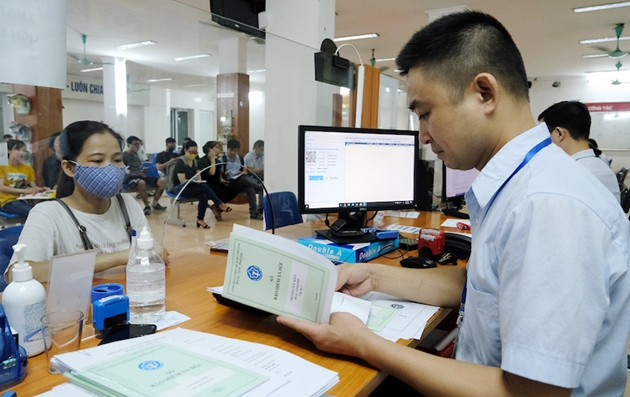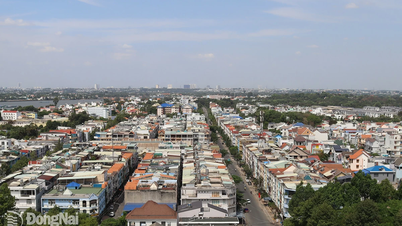In a recent report sent to the agencies drafting the Law on Social Insurance Amendments, 8 business associations (Associations of Enterprises) gave their opinions on the plan to pay social insurance to receive pensions for employees.
After reviewing and synthesizing opinions from businesses, this Association assessed that the current social insurance payment plan leads to a situation where many workers, especially manual workers, will have very low salaries when they retire.
Regarding the contribution rate and salary used as the basis for compulsory social insurance contributions, the draft stipulates that the contribution rate remains the same as the 2014 Social Insurance Law. That is, employees contribute 8%, employers contribute 17% to the pension and death fund. According to the Association of Enterprises, this is a high contribution rate compared to the region and the world, specifically Malaysia contributes 13%, the Philippines 10%, Indonesia 8%, Thailand 5%...
Regarding the social insurance contribution level, the draft proposes two options. Option 1, monthly salary includes salary and salary allowance, other additional amounts that determine the specific amount along with the salary agreed upon in the labor contract according to the provisions of the labor law (remaining the same as the Social Insurance Law 2014).
Option 2, monthly salary includes salary and salary allowances, other supplements as prescribed by labor law. Salary used as the basis for social insurance contributions does not include bonuses, other supports and allowances not related to job performance or position in the labor contract as prescribed by labor law.

According to the representative of the Association of Enterprises, although option 1 reduces the pressure on employees and employers from the high contribution rate, because the contribution rate depends on the agreement between the two sides of each enterprise, it causes a loss of policy uniformity, imbalance between enterprises, and the income gap between employees when working and retiring in many enterprises is very different.
Option 2 basically pays on actual salary minus some items as prescribed by law. With the current social insurance contribution rate and in the draft, enterprises "cannot bear it", reducing competitiveness and employees' income will decrease.
Social insurance payment equal to 70% or 90% of actual salary
From the analysis of the two options of the draft, the Association of Enterprises proposed two options. Option 1, bring the compulsory social insurance contribution rate back to the 2009 level, that is, 5% for employees and 15% for employers, a total of 20%, not the current 25% (8% for employees, 17% for employers).
However, the base level of social insurance contributions will not be based on the salary, salary allowances and other additional amounts agreed upon in the labor contract as at present (paid on input) but paid on 70% of the actual income of the employee (paid on output). This will be more scientific and practical, high income - high contribution and low income - low contribution.
Option 2, further reduce the contribution rate by 20% compared to option 1. That means the employee contributes 4% and the employer contributes 12%, for a total of 16%. However, the contribution base will be based on actual income, excluding some non-salary items. Thus, the contribution base accounts for about 90% of the employee's actual salary.
Business representatives believe that choosing one of the two options above will overcome the shortcomings of the contribution rate and contribution base of the 2014 Social Insurance Law, social insurance revenue will not decrease, the income from work and the pension of employees will not differ too much, there will be no more subjective factors (agreements), so there will be more balance between businesses.
The maximum pension rate may be lower than 75% (as regulated in many countries around the world), but the actual pension will be higher.
As a member of the Drafting Committee of the Law on Social Insurance Amendments, Mr. Hoang Quang Phong, Vice President of the Vietnam Federation of Commerce and Industry , said that the level of social insurance contributions must be close to the actual payment capacity and stability of the enterprise. If this is not achieved, it will not ensure feasibility.
However, from the perspective of protecting and managing workers' rights, the representative of the Vietnam General Confederation of Labor said that to improve this situation, it is necessary to manage salaries transparently, and the salary level for social insurance contributions must be the actual salary. That means the employee must pay social insurance according to the actual salary. Only then will the salary of the employee upon retirement be higher.
In fact, currently most employees pay social insurance at a rate only 5-7% higher than their basic salary, which is very disadvantageous for employees.
Source


![[Photo] More than 124,000 candidates in Hanoi complete procedures for the 2025 High School Graduation Exam](https://vphoto.vietnam.vn/thumb/1200x675/vietnam/resource/IMAGE/2025/6/25/fa62985b10464d6a943b58699098ae3f)


![[Photo] General Secretary To Lam works with the Standing Committee of Quang Binh and Quang Tri Provincial Party Committees](https://vphoto.vietnam.vn/thumb/1200x675/vietnam/resource/IMAGE/2025/6/25/6acdc70e139d44beaef4133fefbe2c7f)

![[Photo] First training session in preparation for the parade to celebrate the 80th anniversary of National Day, September 2nd](https://vphoto.vietnam.vn/thumb/1200x675/vietnam/resource/IMAGE/2025/6/25/ebf0364280904c019e24ade59fb08b18)





























































































Comment (0)